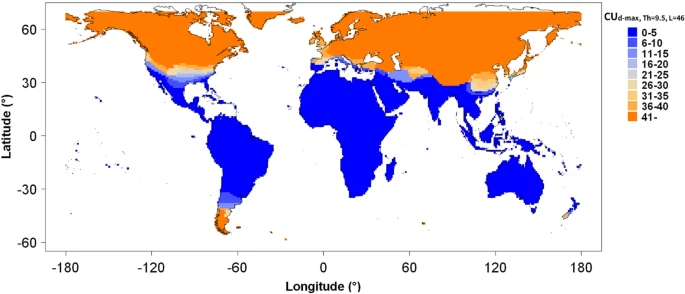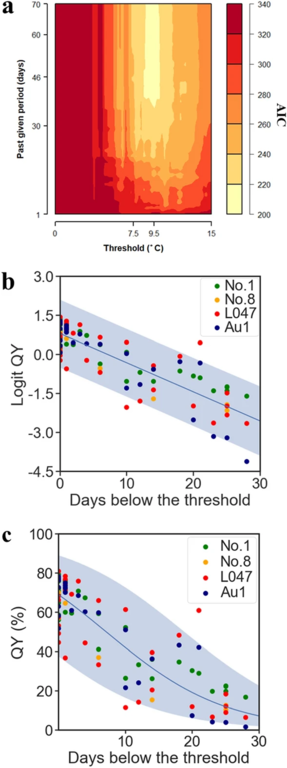・We proposed a novel statistical model to explain some of the damage caused by cold temperature stress on E. globulus based on experimental observation data collected from an experimental field trial.
・The simulation using this model suggested that it was possible to some extent to predict cold injury that occurs at times and locations different from the data provided for model building.
・It was expected that the earlier screening evaluation of cold-tolerant tree breeding will lead to a significant reduction in the time and cost involved in breeding forest trees.
Abstract
Eucalyptus trees are important for industrial forestry plantations because of their high potential for biomass production, but their susceptibility to damage at low temperatures restricts their plantation areas. A 6-year field trial of Eucalyptus globulus was conducted in Tsukuba, Japan, which is the northernmost reach of Eucalyptus plantations, and leaf damage was quantitatively monitored over four of six winters. Leaf photosynthetic quantum yield (QY) levels, an indicator of cold stress-induced damage, fluctuated synchronously with temperature in the winters. We performed a maximum likelihood estimation of the regression model explaining leaf QY using training data subsets for the first 3 years. The resulting model explained QY by the number of days when the daily maximum temperature was below 9.5 °C over approximately the last 7 weeks as an explanatory variable. The model was then used to perform two kinds of simulations. Geographical simulations of potential Eucalyptus plantation areas using global meteorological data from more than 5,000 locations around the world successfully predicted an area that generally agreed with the global Eucalyptus plantation distribution reported previously. Another simulation based on meteorological data of the past 70 years suggested that global warming will increase the potential E. globulus plantation area in Japan approximately 1.5-fold over the next 70 years.
Benefit
By combining the model which enables to predict the low temperature-induced damage to E. globulus trees by means of temperature information alone, with machine learning techniques, it would provide a fairly rough estimate of the potential for establishing plantation-based cultivations of E. globulus.
Market Application
Significant reduction in the time and cost involved in breeding forest trees.
Publications
https://www.nature.com/articles/s41598-023-37038-8


